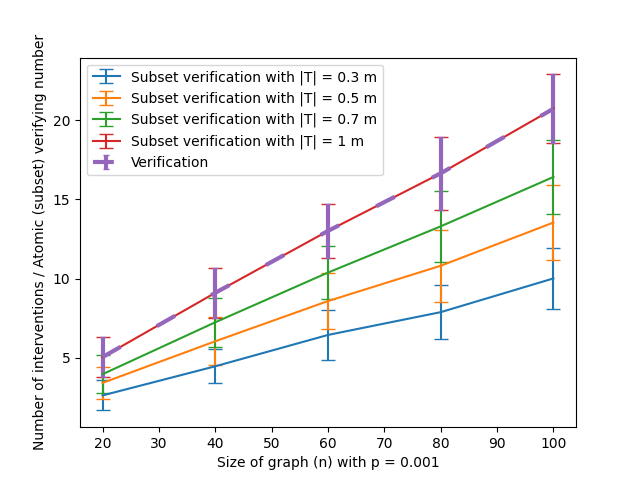Verification and search algorithms for causal DAGs
We study two problems related to recovering causal graphs from interventional data: (i) $\textit{verification}$, where the task is to check if a purported causal graph is correct, and (ii) $\textit{search}$, where the task is to recover the correct causal graph. For both, we wish to minimize the number of interventions performed. For the first problem, we give a characterization of a minimal sized set of atomic interventions that is necessary and sufficient to check the correctness of a claimed causal graph. Our characterization uses the notion of $\textit{covered edges}$, which enables us to obtain simple proofs and also easily reason about earlier known results. We also generalize our results to the settings of bounded size interventions and node-dependent interventional costs. For all the above settings, we provide the first known provable algorithms for efficiently computing (near)-optimal verifying sets on general graphs. For the second problem, we give a simple adaptive algorithm based on graph separators that produces an atomic intervention set which fully orients any essential graph while using $\mathcal{O}(\log n)$ times the optimal number of interventions needed to $\textit{verify}$ (verifying size) the underlying DAG on $n$ vertices. This approximation is tight as $\textit{any}$ search algorithm on an essential line graph has worst case approximation ratio of $\Omega(\log n)$ with respect to the verifying size. With bounded size interventions, each of size $\leq k$, our algorithm gives an $\mathcal{O}(\log n \cdot \log k)$ factor approximation. Our result is the first known algorithm that gives a non-trivial approximation guarantee to the verifying size on general unweighted graphs and with bounded size interventions.
PDF Abstract